Physical Address
304 North Cardinal St.
Dorchester Center, MA 02124
This chapter considers skeletal trauma with an emphasis on the importance of the conventional radiograph in establishing the diagnosis of bone injury. The role of CT and MRI in identifying occult bone injury and more accurately defining patterns of injury that modify management is detailed; soft tissue injury assessment is not considered in this chapter.
Evaluation of potential bone injury ideally requires two radiographs obtained at right angles to one another owing to the fact that a single view is inadequate. Many of the fractures described are only identifiable on the lateral projection and whilst most radiologists focus on the anteroposterior (AP)/posteroanterior (PA) view, it is important to be familiar with and rigorously interrogate the lateral projection.
Patterns of fracture vary between adults and children. This predominantly relates to the relative elasticity of the developing skeleton and its ability to deform rather than fracture.
Fractures traversing cortices separating a bone into two parts are referred to as a complete fracture ( Fig. 45.1 ). Incomplete fractures as interpreted on conventional radiographs underestimate severity; the fracture frequently crosses both cortices when imaged with MRI and CT. Incomplete fractures are encountered but these are frequently not well seen on plain radiographs and are only demonstrated on MRI
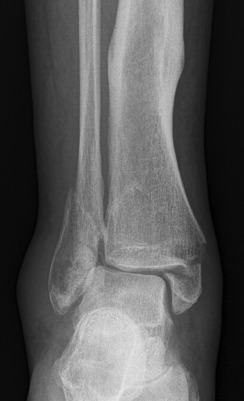
A fracture may be transverse, oblique or spiral. This defines stability, probability of displacement, mechanism of injury and, correspondingly, the corrective forces that may be required to redress deformity. Undisplaced oblique fractures may be visible in one view only ( Fig. 45.2A and B )
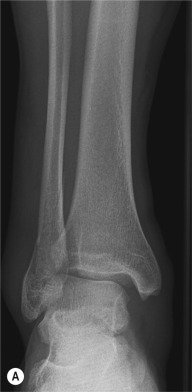
Reference to the epiphyseal, metaphyseal and diaphyseal regions is appropriate in both mature and immature skeleton. In the diaphysis, the shaft can be considered in thirds and description made relative to these subdivisions.
The bone ends may be aligned and opposed, displaced or off-ended ( Fig. 45.3 ). The fragments may be driven together through longitudinal loading, referred to as impaction, which may impede reduction that would require an initial distracting force. Impacted fractures often present as hyperdense lines in contradistinction to the classic lucentfracture line; this is not uncommonly encountered in femoral neck fractures. Angulation can be described in two formats, either by the orientation of the bone distal to the fracture line or by the direction at the apex of the fracture.
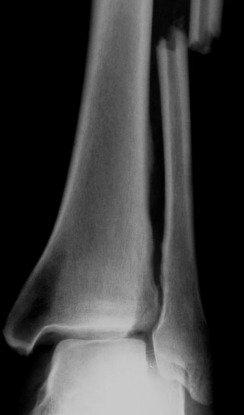
Extension into the joint is an important observation as it may influence the operative approach; it is often associated with soft tissue injury and instability and frequently has a less favourable outcome. Small peri-articular fractures are important and represent avulsions by ligaments or joint capsule; examples include the Segond avulsion fracture in the knee, which is a predictor of Anterior Cruciate Rupture (>95%) ( Fig. 45.4 ).
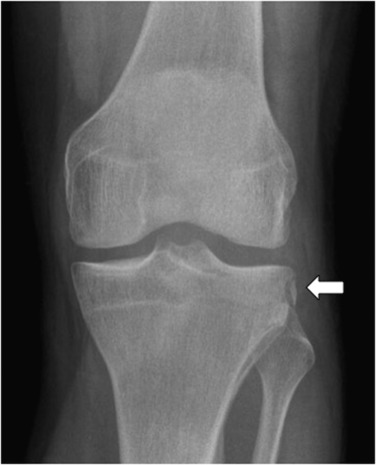
Lipohaemarthroses and, to a lesser extent, joint effusions are indicators of intra-articular injury and fracture ( Fig. 45.5 ). The absence of either does not exclude intra-articular injury, as capsular disruption will result in dissolution of an effusion.
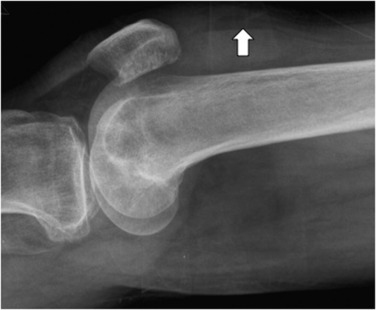
Comminuted fractures refer to injuries with more than two fragments: the smaller fragments are usually disregarded. Orientation and impaction of fragments are important to report, especially those involving articular surfaces, which can be more comprehensively assessed by CT with reconstructions.
Occult fractures are increasingly recognised, not only because of increasing access to MRI (and to a lesser extent CT) but also owing to a lowered threshold to refer for imaging in patients with persistent symptoms but normal plain radiographic findings.
Clinically, these patients present with either disproportionate symptoms in the context of normal plain radiography or persistent symptoms over a period of 2 weeks that are unrelenting. Identification of these injuries can change management and is particularly relevant for lower limb injuries where appropriate immobilisation and modified weight bearing is essential to avoid progressive displacement.
The rationale for investigating is identical to that described above. The fracture line is incomplete and does not disrupt the entirety of the cortex. Such injuries are frequently stable but may require immobilisation or reduced weight bearing with specific patient guidance and orthopaedic follow-up ( Fig. 45.6 ).
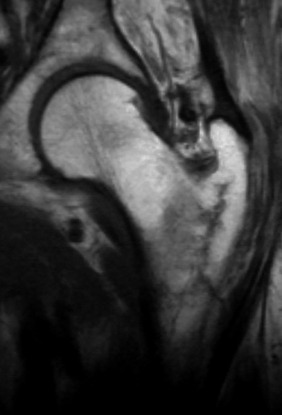
This entity is only identifiable on MRI. Short tau inversion recovery (STIR) sequences are very sensitive and identify areas of increased signal, usually in the epiphyseal region as a result of overloading of adjacent articular surfaces; such overloading is postulated to cause trabecular compression and microfractures. Two patterns are recognised: the diffuse type manifests as widespread ill-defined area of marrow oedema in the epimetaphyseal region and can take months to resolve; a more focal or geographic type follows a high-energy injury and is usually sub-articular in type and more well-defined. Follow-up of these patients has demonstrated a high prevalence of cartilage degeneration overlying this area within a year of injury ( Fig. 45.7 ).
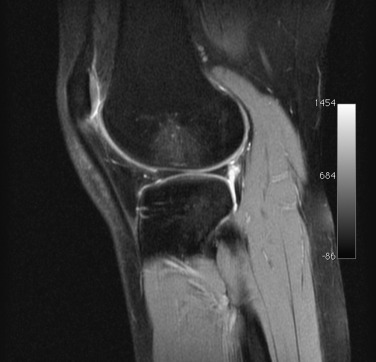
Insufficiency and stress fractures are not morphologically distinct from other fractures but occur after either minor or repetitive trauma respectively. Insufficiency fractures occur when normal force results in the fracture of abnormal bone, usually secondary to either osteoporotic or metabolic bone disease. This is more frequently seen in elderly female patients; common sites include the femoral neck and vertebral fractures. A pathological fracture also occurs through an area of abnormally weak bone, but where there is a focal bony abnormality. The term is usually reserved for fractures occurring at the site of bone involvement by tumour, which may be a primary benign lesion ( Fig. 45.8 ), a primary malignant lesion, a secondary malignant lesion or a myelomatous deposit. Less frequently, fractures can occur secondary to developmental anomalies such as fibrous dysplasia and neurofibromatosis.
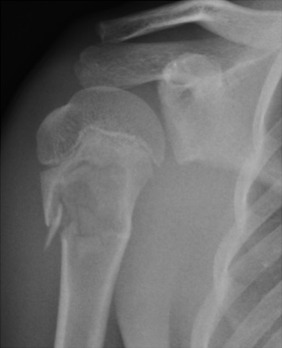
Stress fractures occur in normal bone subjected to extreme repetitive stress exceeding the capacity of the reparative processes, with resultant progressive weakening of the bone to the point where a true fracture occurs. A lucent fracture line is not often evident in the early stages of this process. A periosteal reaction ( Fig. 45.9 ) and, later, medullary sclerosis may develop at the site of stress and may be the only abnormality on plain radiography. If abnormal loading is continued, a frank fracture will eventually occur. These injuries are easily missed on radiographs, which should be repeated if symptoms persist or referral made for MRI. MRI allows early diagnosis and modification of activity or, alternatively, comprehensively excludes fracture as a diagnostic possibility. Tibial stress fractures in sportsmen, runners and military recruits in training represent the commonest site of stress fractures but other areas include the pelvic ring, metatarsals and pars interarticularis.
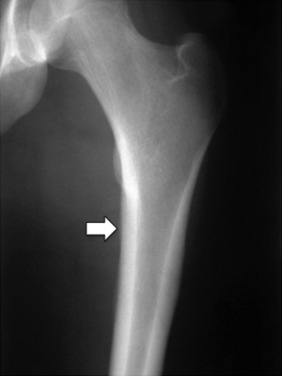
Avulsion fractures occur at sites of tendon, ligament or capsular attachments. The tractional force applied by the soft tissue structures avulses a bone fragment or, occasionally, the entire apophysis from the underlying bone. An avulsion injury must clearly relate to the insertion of one of the aforementioned structures and should not include fragmentation and impaction injuries. Avulsion injuries should not, therefore, be referred to as flake or chip fractures unless there is a clear mechanism of a direct impact. Understanding of the above leads to a more comprehensive appreciation of the soft tissue injuries and associated biomechanical consequences. A bone avulsion at the site of tendon attachment occurs due to muscle contraction and is usually encountered in muscle groups crossing two joint lines. The Rectus Femoris and Hamstring origins are particularly prone to avulsion. Ligaments, on the other hand, have no contractile capacity and serve to stabilise joints. Ligamentous avulsion of a bone fragment requires an extreme distraction or angulation of the joint. Knowledge of major tendon and ligament attachments is essential for correct interpretation of these injuries. The more common examples will be described throughout the chapter. Well-established avulsions can be misreported as tumours if their position and well-defined margins are not considered ( Fig. 45.10 ).
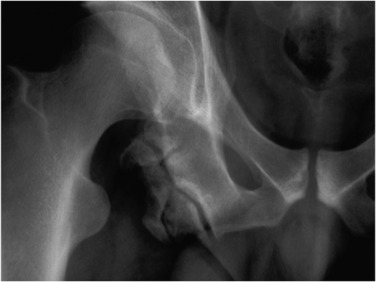
When force is applied to the immature skeleton, bone deforms before returning to normal and this is frequently referred to as an elastic injury. Beyond a certain limit, the elasticity profile of the paediatric bone is exceeded, then a deformity and malalignment may persist but there is no discrete fracture line; this is referred to as a plastic injury.
Elastic- and plastic-type injuries of the immature bone can also lead to buckling of the cortex and periosteum along the concave side of the fracture ( Fig. 45.11 ).
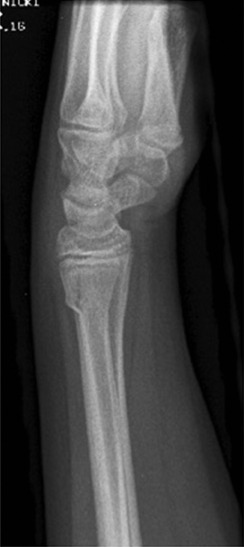
This represents a progression beyond the torus injury. There is buckling of the cortex as described for a torus injury but there is also interruption of the cortex on the convex side resembling a broken branch.
The classification described by Salter and Harris describes a progression from type 1 to type 5, the patterns of injury representing a progressive increase in the risk of complication and potentially premature fusion of the growth plate ( Fig. 45.12 ).
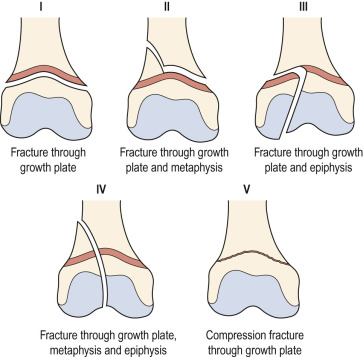
Disruption of the growth plate, which may appear widened. There is no involvement of the epiphysis or metaphysis and the prognosis for normal growth is good ( Fig. 45.13 ).
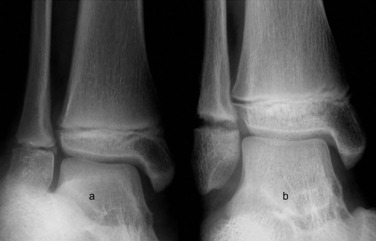
Fracture involving the growth plate, which exits through metaphysis. This is commonly seen in the wrist and usually best demonstrated in this area on the lateral projection ( Fig. 45.14 ).
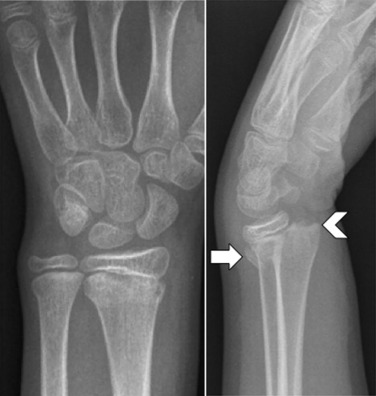
The fracture involves the growth plate and exits through the epiphysis (see figures in Ankle section).
The fracture extends through the epiphysis, growth plate and metastasis. The orientation through these three areas may vary and is best demonstrated in the form of the triplane fracture of the distal tibia (see figures in Ankle section).
The growth plate is impacted or crushed. This impedes the ability of the growth plate to mature and may result in generalised or, on occasion, focal growth plate fusion with resultant limb length discrepancy or disproportionate growth plate development, leading to joint deformity and angulation.
Dislocation refers to the loss of congruence of joint articular surfaces. The description of the injuries by convention refers to the displacement of the distal bone relative to the proximal articular surface ( Fig. 45.15 ). Associated fractures are not uncommon and can modify management. Post-manipulation views are essential to confirm reduction and restoration of congruity. Persistent offset is an indication of either an effusion or soft tissue interposition that may require additional imaging and potential operative reduction. Subluxation occurs when the joint surfaces are no longer fully congruent but articular surfaces remain partially opposed.
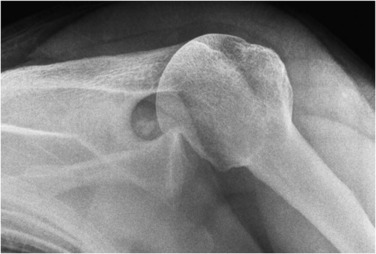
The shoulder consists of two separate joints: the freely mobile gleno-humeral (GH) joint with a ball and socket configuration and the relatively immobile acromio-clavicular (AC) joint. Both should be evaluated for alignment and periarticular fracture. The GH joint has a shallow socket, enabling an extensive range of movement, but this is inversely related to stability. The GH joint is the most frequently dislocated joint.
The standard AP radiograph of the shoulder is supplemented by a variety of additional views. Following trauma, abduction is frequently impossible; consequently a modified 40-degree axial oblique is preferred in suspected injuries to exclude dislocation ( Fig. 45.16 ). In chronic instability a conventional axial view is achievable, whereas a ‘Y’ lateral view is preferable for suspected scapula fractures or if the modified axial view is unachievable.
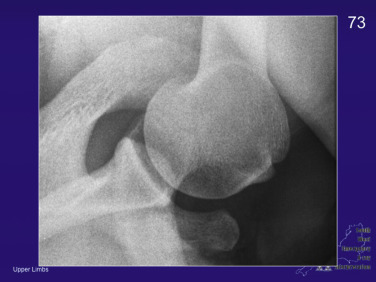
The humeral head is hemispherical and should be seen in profile on an AP view with the arm externally rotated; its surface will be congruent with the glenoid. This congruence is less easily confirmed with views of the shoulder with the arm internally rotated arm, and causes diagnostic uncertainty in relation to exclusion of posterior dislocation where the arm/shoulder is locked in internal dislocation. Recognition of physeal growth plates is essential in the shoulder to avoid false-positive diagnoses, the proximal humeral growth plate ( Fig. 45.17 ), and the unfused apophyses of the acromion and coracoid can all be misinterpreted as fractures in adolescents ( Fig. 45.18 ).
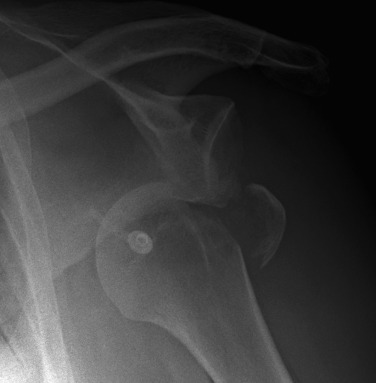
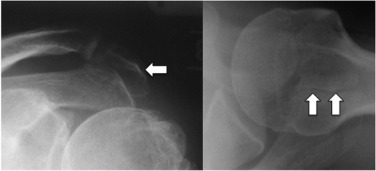
Shoulder dislocation occurs more frequently than any other joint. Dislocation is often the result of trauma and is more prevalent in men (5 : 1). Anterior dislocation is the most common type (95%), where the humeral head usually dislocates anteroinferiorly and is easily identified on the AP view ( Fig. 45.19 ). Associated injuries identifiable on radiographs include:
Hill-Sachs lesion: A wedge or ‘hatchet-shaped’ defect in the postero-superior region of the humeral head. The size of the defect, if large, can engage in external rotation precipitating re-dislocation. This usually appears as a radiodense line on the AP view but its size and depth are optimally demonstrated on the axial or oblique axial views. Subtle injuries may be recognised only with cross-sectional imaging ( Fig. 45.20 ). A Reversed Hill-Sachs lesion is seen on the anterior aspect of the humeral head following posterior dislocation
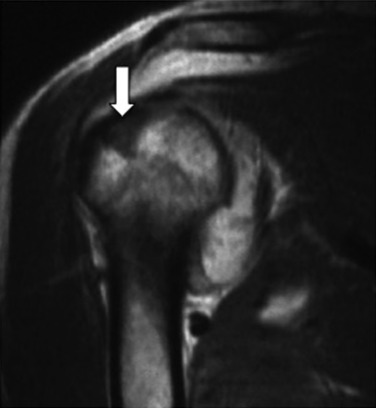
Bony Bankart lesion: To be distinguished from the soft tissue Bankart lesion or labral tear. The bony Bankart lesion represents a variably sized triangular fragment sheared off the antero-inferior aspect of the glenoid due to impaction of the humeral head ( Fig. 45.21 ). A high probability of re-dislocation exists with fragments greater than 5 mm in depth and width. These injuries are identifiable as small bone fragments on post reduction AP and axial views
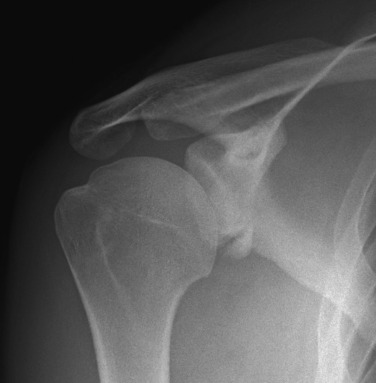
Greater tuberosity avulsions: Typically result from traction/avulsion by the attachment of supraspinatus, which is invariably intact and attached to the fragment that it displaces superomedially ( Fig. 45.22 ).
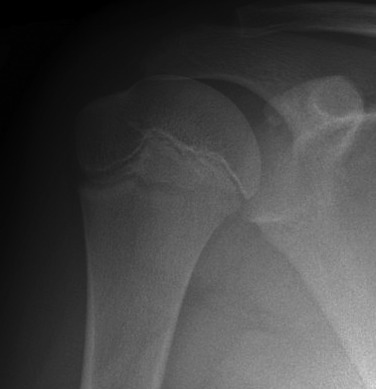
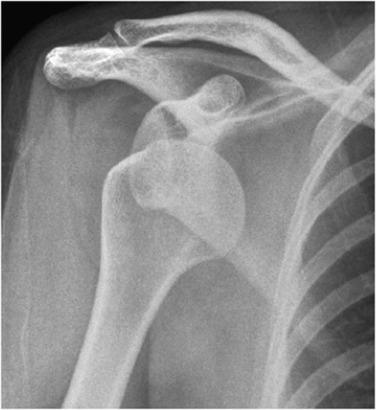
Posterior dislocation is rare, accounting for less than 5% of dislocation and is frequently associated with generalised ligamentous laxity and multidirectional instability ( Fig. 45.23 ). The humeral head is internally rotated and appears as a ‘light-bulb’ in shape, as the head is viewed en face on the AP view. Unlike anterior dislocations, the head does not displace medially to the same extent, with the diagnosis often depending on confirmation by the axial view.
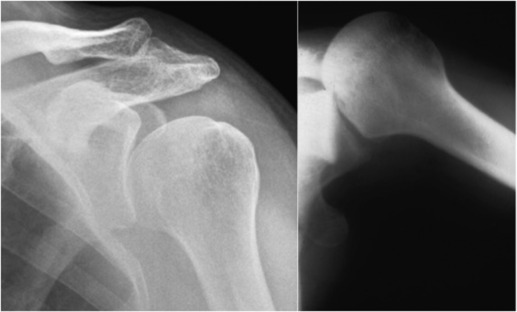
Fractures and bony defects are uncommon and are frequently subtle, being more easily identified on CT or MRI. They include a reverse Hill-Sachs defect in the anterosuperior humeral head and posterior glenoid fractures ( Fig. 45.24 ).
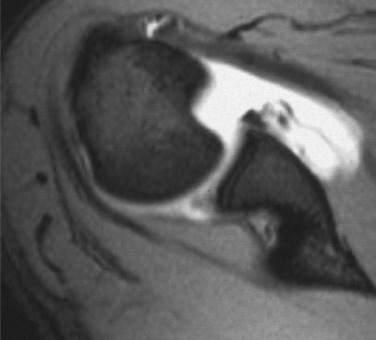
A rare form of shoulder dislocation, the humeral head is dislocated inferiorly as a result of extreme hyper-abducting force. This injury has the highest risk of neurovascular, ligament and rotator cuff injuries.
Post-reduction views are mandatory following any reduction for dislocation and should include an AP and, preferably, an axial or axial oblique view. If the joint surfaces are congruent but an articular offset exists, MRI is indicated to exclude interposition of soft tissues, usually subscapularis, or the long head of biceps within the joint space.
Fractures of the proximal humerus occur more commonly in older patients. Younger patients have stronger bones and more often suffer ligament injury or dislocation. Fracture commonly follows the line of the fused growth plates, affecting the greater tuberosity, lesser tuberosity, and the Surgical and Anatomical necks of the humerus. Neer described a classification of proximal humeral fractures based upon the extent of displacement (>1 cm), rotation (>45 degrees) and the number of fragments exceeding these parameters. Closed manipulation is usually adequate to reduce most two-part fractures. Based on the above, a multiple-part fracture of the humeral head, which is undisplaced, is classified as a Neer ‘1 part’ fracture. This pattern accounts for the great majority (85%) of such fractures, which, if minimally displaced, are not considered as separate fragments. Two-, three- and four-part fractures are seen with fractures involving, respectively, the greater and lesser tuberosities in addition to the surgical neck. Axillary artery and vein and brachial plexus injury can occur with surgical neck fractures.
Transverse fractures of the humerus involve either the surgical neck or, less commonly, the shaft inferior to this. Shaft fractures are more often spiral and can include segmental fractures. Medial displacement of the humeral shaft proximal to the fracture occurs due to the pull of pectoralis major muscle.
Clavicle fractures are very common; as the bone is just under the skin surface, they are easy to diagnose clinically. Fractures most often involve the middle third (80%), outer-third fractures occur in 15% of cases and medial third fractures are uncommon, accounting for only 5% of cases. The AC joint is held in place by the AC ligament and the two coraco-clavicular (CC) components known as conoid and trapezoid ligaments. Minor disruptions are best detected by looking at the inferior cortex of both the clavicle and the acromion. These should align. If they do not, then there is an AC joint subluxation. The normal distance between the superior surface of the coracoid and the inferior clavicle is no more than 13 mm.
Disruptions of the AC joint are graded from type 1 to type 6 as described by Rockwood. Grade 1 is a sprain of the ligaments only and there is only minor separation, if any, at the AC joint. In grade 2 injuries the AC joint ligaments are torn but the CC ligaments are intact, and the clavicle is elevated but not above the superior border of the acromion ( Fig. 45.25 ). In a grade 3 injury the CC ligaments are also disrupted. As a result, the coraco-clavicular distance may exceed 13 mm and the clavicle is elevated above the superior border of the acromion ( Fig. 45.26 ). Surgical stabilisation will be required. Detecting the difference between a grade 2 and grade 3 injury may be facilitated by weight-bearing radiography using weights strapped to the wrist to distract the AC joint.
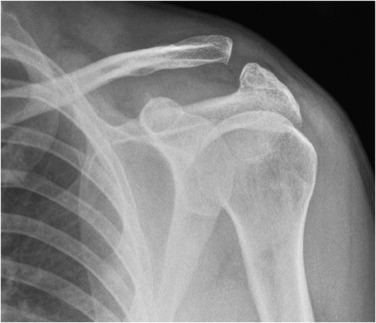
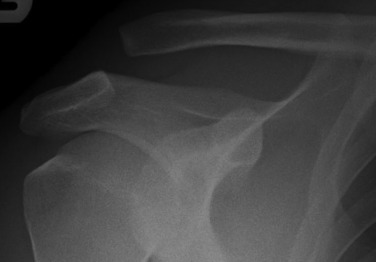
There are no variations in the standard views of the elbow, which comprise the AP and lateral projections. A useful soft-tissue sign in the elbow is the fat pad sign. The normal elbow has small pads of fat closely applied to the distal humerus both anteriorly and posteriorly. These are not normally visible as they lie within the bony fossae of the distal humerus; however, if there is a joint effusion, such as may occur following trauma, the fluid displaces the fat pads away from the humerus and out of their respective fossae. These fat pads can then be identified on a lateral radiograph as lucent areas. The anterior fat pad may just be visible normally but it should not be displaced away from the humerus. A visible posterior fat pad is always abnormal. The presence of displaced fat pads indicates an effusion and, even if a fracture is not readily identified, further careful inspection of the radiograph is required to exclude a subtle fracture that may have been overlooked ( Fig. 45.27 ). In children, a supracondylar fracture is the commonest lesion to be overlooked; in adults, it is a radial head fracture. Note, however, that the absence of the fat pad sign does not exclude a fracture and that effusions are not always caused by trauma.
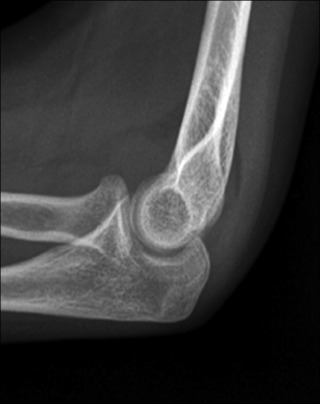
Become a Clinical Tree membership for Full access and enjoy Unlimited articles
If you are a member. Log in here